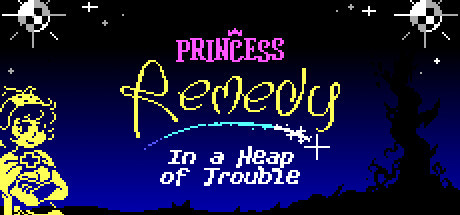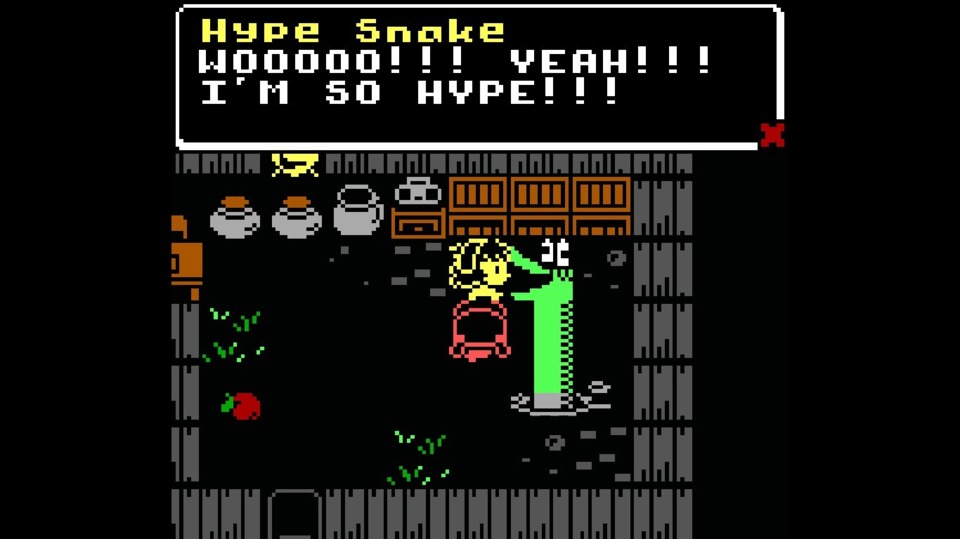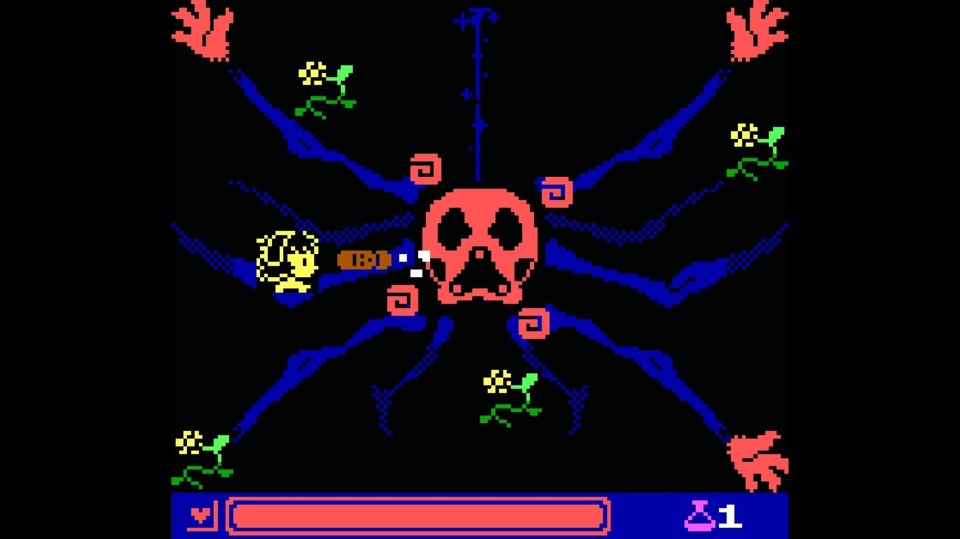Indie Game of the Week 158: Princess Remedy
By Mento 0 Comments

It's not often I double up an IGotW slot like this (in fact, this would be a first), but the Princess Remedy games - there's two, Princess Remedy in a World of Hurt (2014) and Princess Remedy in a Heap of Trouble (2016) - are bite-sized adventures by design and perfect as a twosome. A graduate of some nebulously anime "healing school" (and also a Princess I guess) Princess Remedy is sent out to treat the ails of a diseased and miserable populace with the ultimate goal of defeating the source of this pestilence once and for all. Depicted through a classic Zelda-esque top-down perspective, the games have you moving around talking to NPCs complaining of various illnesses - from tummyaches to moral panics to the debilitating condition known as "being dead" - and then entering a "healing mode" where you cure them of their very specific ailments.
This healing mode is a top-down multi-directional shoot 'em up in the same engine, where Princess Remedy automatically shoots out curative "bullets" at regular intervals as the player moves her around avoiding enemy projectiles. The goal of these sequences is to eliminate every enemy on screen, each of whom has various different movement and attack patterns: one might shoot the occasional bullet your way from a stationary position, some hone in on you for collision damage, others only retaliate once you hit them - the enemies also increase in damage and difficulty as the game progresses, and each NPC has a specific assortment and arrangement of these viruses to deal with. Upon completing a healing mode fight the player is rewarded a stat boost, most of which are hearts (health). In fact, you are gated off from later parts of the game until you have a specific milestone total of hearts from helping those in the immediate vicinity. Other upgrades come in handy too, like having increased regeneration (this becomes "drain" in the sequel, with the change being that you don't regen health automatically but gain life by doing damage to enemies), stronger attack power, and more projectiles per shot. As well as earning these stat boosts from fights you can also find them in chests littered around the environment, some of which are concealed behind (not very) hidden walls and passageways. I found it advantageous to sweep up all these non-battle upgrades first whenever I got to a new area.

These games are nothing if not simple in their execution, but although each one lasts about an hour there's a certain design efficiency to boiling down the Zelda experience to those tense battles where you had to clear a room of foes moving in from all directions without kicking the bucket. This sort of condensed and concentrated Zelda-lite experience has become something of developer Ludosity's stock and trade: they're perhaps better known for the Ittle Dew series of top-down action-adventure games, which similarly narrowed in on a specific facet of the Zelda games (in Ittle Dew's case, it was the environmental puzzles often found in dungeons). Princess Remedy also benefits from the sharp, witty writing of the Ittle Dew franchise, as the NPC sicknesses become more ridiculous and abstract as the games progress.
Princess Remedy also has an unusually affectionate side throughout: in the first game, you end your adventure by choosing someone to marry, giving you the choice of every healed NPC of any gender you've met so far (or an empty chest, if you prefer). The sequel expands on this further: at any point Remedy can choose to start dating an NPC who then starts following behind you, and this has the effect of upgrading your healing mode special attack (in the first game, and the default for the second, this is a potion flask thrown like a grenade) to a bunch of different variants. You can date people, skeletons, plants, spiders, dark lords, or a particularly apathetic frog that won't help you in any way. It's all part of this cute and goofy world's charm.

The game is also one of the few Indies I've played to go the ZX Spectrum route for its aesthetic, using a lot of stark neon colors on black that tend to overlap whenever sprites cross the contours of an invisible grid. On its native resolution, the first game is barely the size of a postage stamp; the sequel, meanwhile, retains the correct ratio/sharpness of the pixel graphics regardless of the screen size. Finally, and perhaps most importantly, the first game is free: it was the result of a Game Jam, while the sequel is more of a commercial fully-featured remake (and regularly drops below a dollar when a sale's on).
I wasn't expecting much from a pair of tiny games with such a lo-fi look, but I should've trusted Ludosity to deliver because both are eminently entertaining ways to spend an hour. The healing mode battles are varied enough not to drag on too much, and the alternative difficulty settings extend the games' longevity a little further if they prove to be on the easy side (I found the challenge level about right on Normal, personally). The micro-sized aesthetic has this cosy appeal to it not unlike Minit or the original The Legend of Zelda: Link's Awakening, and the games' writing made me chuckle once or twice. Both are definitely worth what little investment they ask of you.
Rating: 4 out of 5.
| < Back to 157: Donut County | The First 100 | > Forward to 159: Heat Signature |

0 Comments